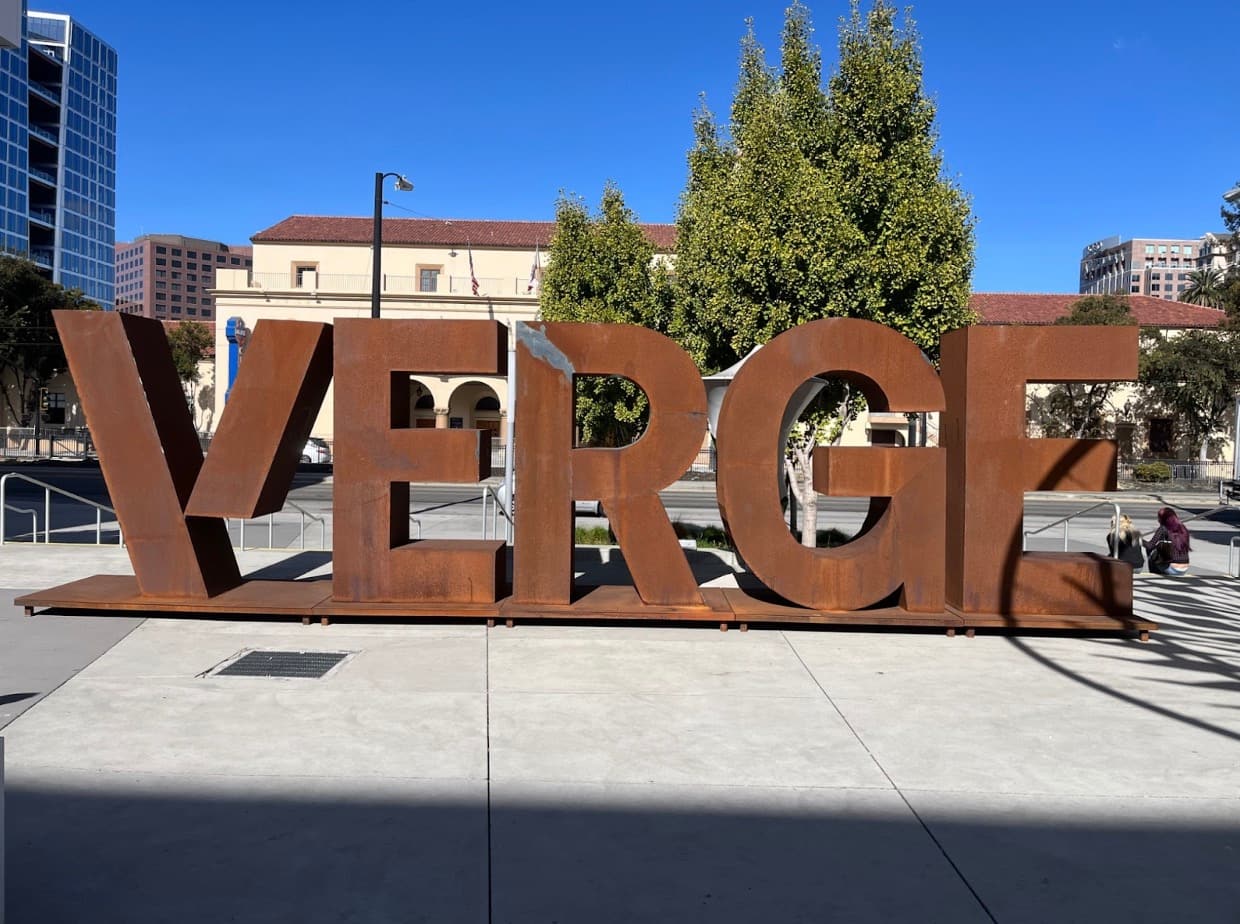Experiencing Verge for the First Time
Verge is different
Last month, I had the good fortune to attend the Verge conference for the very first time. Verge describes itself as “the center of gravity for professionals catalyzing transformative, profitable change through decarbonizing their operations and supply chains.” More simply, it’s a forum for practitioners like ourselves to share both our successes and setbacks as we work to integrate climate solutions. I couldn’t wait to dive in.
As I first stepped into the venue I could tell this conference would be different. The discussions were buzzing at an inspiring frequency. As a sustainability professional in the heart of the tech sector, I shaped my week around topics that were most relevant to my work: data centers, renewable energy, and impact. This led to interesting deep dives on topics like environmental disclosures, data center strategy, policy, and transmission reform.
As my specific role focuses on customer enablement, I was particularly interested in understanding how our colleagues are engaging stakeholders along the way. Needless to say, there was a lot to take in.

We have a lot of work ahead of us
As sustainability professionals, we spend so much time focusing on specific parts of our own environmental strategies that we don’t often get the opportunity to hear from our colleagues and just soak in the larger context. As the information and acronyms flew around each room, a few key themes came into focus.
- AI is a massive driver of energy consumption
- There are so many externalities to consider
- It will take more than the people in the room
AI is a massive driver of energy consumption
I knew this going in, but I appreciated the freedom to explore the idea more thoroughly. This topic lands squarely in the middle of our environmental strategy at Akamai. The growth of artificial intelligence (AI) will require more data centers, ultimately translating into the need for more global computing power. This, of course, further translates to growth in energy consumption.
The cause and effect on how that energy is generated can have massive environmental impacts depending on the types of sources in a given grid mix. At Akamai, we strive to deliver on the promise of building, delivering, and securing digital experiences without compromising our commitment to sustainability. That means as our business grows we will need more renewable energy to power it. This is why we made achieving 100% renewable energy by 2030 one of our five overarching goals.
I appreciated the opportunity to see how others are tackling a topic that is so core to our strategy, but Verge also offered me the chance to zoom out even further and think about infrastructure. As we hear so often at these events, “There is no transition without transmission.” Said differently: We can generate all the renewable energy we want, but without adequate transmission capacity, that additional energy cannot make it onto the grid.
Verge reinforced the importance of expanding our own strategic aperture and encouraged us to view our work not only in isolation but also as part of a more extensive network of interdependencies. This means considering how our energy initiatives must align with and adapt to the broader infrastructure requirements and limitations.
It was a timely reminder that, for our clean energy ambitions to succeed, we must actively engage with these larger infrastructure challenges, supporting policies and partnerships that enhance grid capacity and reliability. Doing so will ensure that the energy we’re working so hard to support can genuinely drive positive change on a global scale.
There are so many externalities to consider
As we plan for more data centers and more renewable energy, we must also think about their impacts holistically.
- How do we ensure local communities are supported and have a seat at the table as we plan to power this growth?
- How do we ensure biodiversity is protected and preserved along the way?
- How do we send demand signals that these topics are a critical part of the process?
- How do we communicate these strategies to our stakeholders?
These were just a few of the questions on my mind as I attended these thought-provoking sessions. It was inspiring to see the humility and fervor with which these topics were discussed. No single solution, just a commitment to action and knowledge sharing.
It will take more than the people in the room
One of the moments that truly stuck with me landed during the keynote address. The speaker said very bluntly that the world’s success will take more than the aspirations of those of us in the room. That statement rang in my ears as I did my best to process it. At Akamai, we’ve known this for a long time. Our success depends on the efforts of everyone in the business. That’s why we spent the better part of the last year listening to and learning from customers and employees to understand how we can be the best possible partner for our stakeholders. We’ve learned a lot, but the work doesn’t stop here. It’s an ongoing conversation as we build the coalition that will bring these strategies to bear.
Join us
By the final day of programming, I was in awe of the great work being done, but I also realized that there is still so much left to do. At Akamai, we are proud to work side by side with our colleagues to drive this work forward. If you’re a customer or colleague and are curious to learn more about our environmental strategy, akamaisustainability.com is a great place to start.


